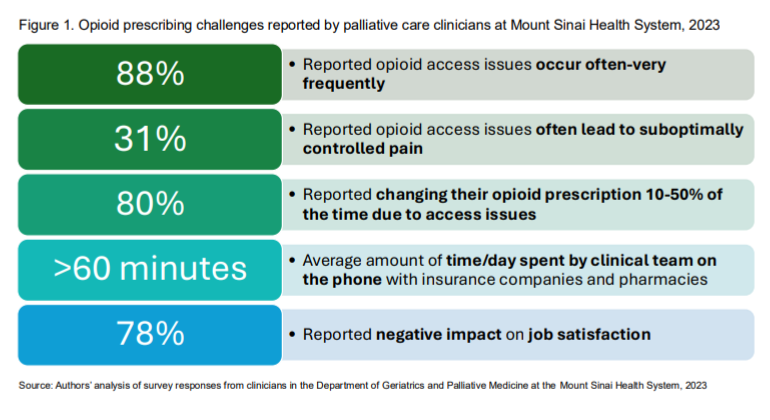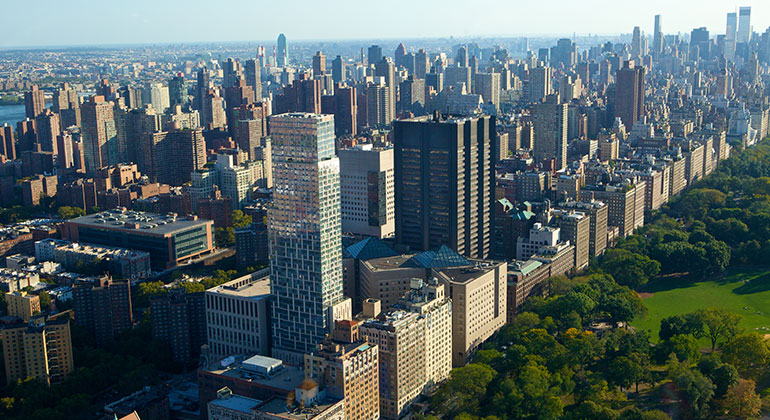Mount Sinai Researchers Find Vast Majority of Americans Have Access to Hospice Care
A new study shows that 98 percent of Americans live within 60 minutes of hospice services, indicating that disparities in enrollment are not likely related to access.
Researchers at Mount Sinai School of Medicine have found that 98 percent of the U.S. population lives in communities within 60 minutes of a hospice provider, suggesting that disparities in use of hospice are not likely due to a lack of access to a hospice provider. The results are published in the current issue of the Journal of Palliative Medicine.
"Despite a significant increase in the availability of hospice services during the past decade, the majority of Americans die without hospice care," said Melissa D.A. Carlson, PhD, Assistant Professor of Geriatrics and Palliative Medicine at Mount Sinai School of Medicine. "Our data show that proximity to a hospice provider is not a likely barrier to hospice enrollment, as the vast majority of Americans have a hospice nearby."
Studies have shown that enrollment in hospice helps address end-of-life concerns facing patients and their caregivers. Hospice services offer symptom management, medication delivery, home crisis intervention, and psychosocial support during one of the most difficult and emotionally demanding phases of the patient’s illness.
Dr. Carlson’s research team studied data from the 2008 Medicare Provider of Services data, U.S. Census data, and geographic mapping software. Census tract characteristics evaluated included population per mile, population over the age of 65, median household per capita income, percentage over the age of 18 with less than a high school education, black population percentage, and census region. The team determined that 98 percent of the U.S. population lives within 60 minutes of a hospice, and 88 percent live within 30 minutes from one.
The average number of minutes between a community center and a hospice was 15 minutes. The number of minutes to the nearest hospice was lower in communities with several characteristics, including: higher population per square mile, higher median household income, lower percentage with less than a high school education, and a higher black population percentage. Communities with higher percentages of the population who are black are more likely to have geographic access to hospice, but previous research has shown that people who are black are less likely to use hospice compared with people who are white.
"Our data suggest that the growth in the number of hospices since 2000 has improved access to hospice care as the closest hospice for approximately one-third of the population, in both rural and urban areas, is a relatively new hospice, certified by Medicare since 2000," said Dr. Carlson. "However, more research is needed to determine why more patients and their families are not under the care of a hospice at the end of life, including hospice admission criteria and patient financial and cultural factors that may present barriers to hospice use."
Co-authors on the study were R. Sean Morrison, MD, Professor, Geriatrics and Palliative Medicine, and Ms. Qingling Du, Senior Research Analyst, both of Mount Sinai School of Medicine and Elizabeth H. Bradley, PhD, Professor of Public Health at Yale University.
About The Mount Sinai Medical Center
The Mount Sinai Medical Center encompasses both The Mount Sinai Hospital and Mount Sinai School of Medicine. Established in 1968, Mount Sinai School of Medicine is one of few medical schools embedded in a hospital in the United States. It has more than 3,400 faculty in 32 departments and 15 institutes, and ranks among the top 20 medical schools both in National Institute of Health funding and by U.S. News & World Report. The school received the 2009 Spencer Foreman Award for Outstanding Community Service from the Association of American Medical Colleges.
The Mount Sinai Hospital, founded in 1852, is a 1,171-bed tertiary- and quaternary-care teaching facility and one of the nation's oldest, largest and most-respected voluntary hospitals. U.S. News & World Report consistently ranks The Mount Sinai Hospital among the nation's best hospitals based on reputation, patient safety, and other patient-care factors. Nearly 60,000 people were treated at Mount Sinai as inpatients last year, and approximately 530,000 outpatient visits took place.
For more information, visit www.mountsinai.org. Follow us on Twitter @mountsinainyc.
About the Mount Sinai Health System
Mount Sinai Health System is one of the largest academic medical systems in the New York metro area, with 48,000 employees working across seven hospitals, more than 400 outpatient practices, more than 600 research and clinical labs, a school of nursing, and a leading school of medicine and graduate education. Mount Sinai advances health for all people, everywhere, by taking on the most complex health care challenges of our time—discovering and applying new scientific learning and knowledge; developing safer, more effective treatments; educating the next generation of medical leaders and innovators; and supporting local communities by delivering high-quality care to all who need it.
Through the integration of its hospitals, labs, and schools, Mount Sinai offers comprehensive health care solutions from birth through geriatrics, leveraging innovative approaches such as artificial intelligence and informatics while keeping patients’ medical and emotional needs at the center of all treatment. The Health System includes approximately 9,000 primary and specialty care physicians and 11 free-standing joint-venture centers throughout the five boroughs of New York City, Westchester, Long Island, and Florida. Hospitals within the System are consistently ranked by Newsweek’s® “The World’s Best Smart Hospitals, Best in State Hospitals, World Best Hospitals and Best Specialty Hospitals” and by U.S. News & World Report's® “Best Hospitals” and “Best Children’s Hospitals.” The Mount Sinai Hospital is on the U.S. News & World Report® “Best Hospitals” Honor Roll for 2024-2025.
For more information, visit https://www.mountsinai.org or find Mount Sinai on Facebook, Instagram, LinkedIn, X, and YouTube.
CAPC Announces New Grant from The John A. Hartford Foundation
Jun 10, 2019 View All Press Releases
